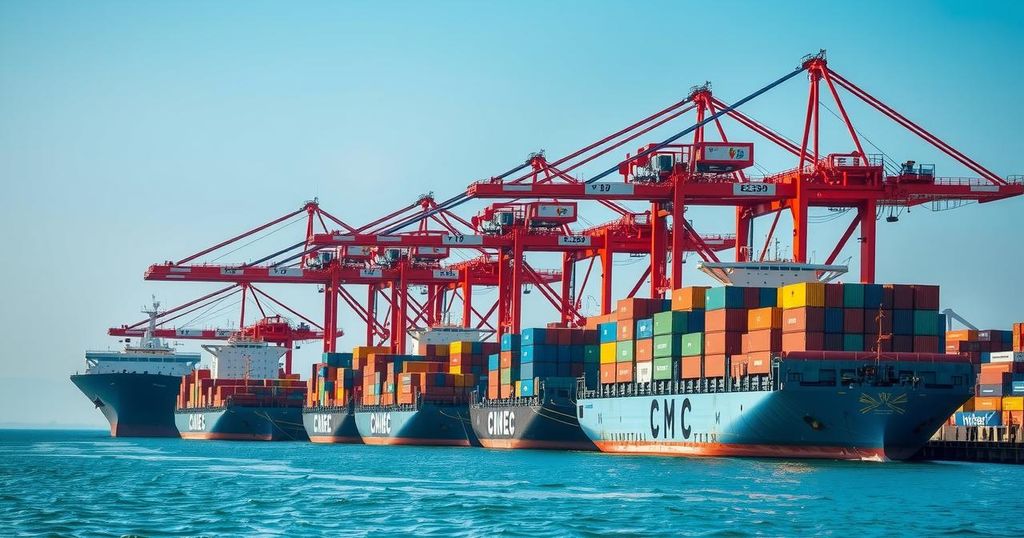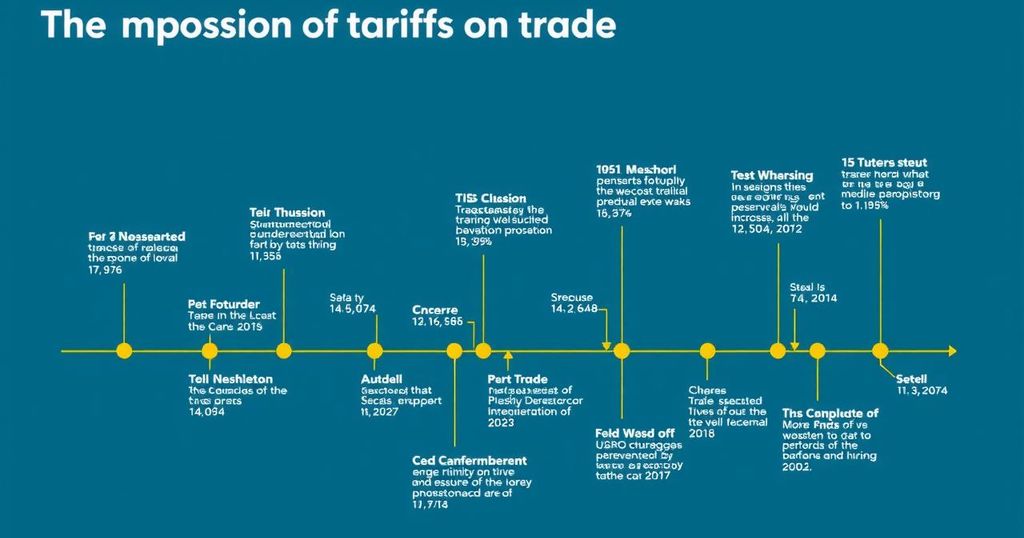Trump’s 10 Percent Tariff on Chinese Goods Now Effective
President Trump’s 10 percent tariff on Chinese goods has taken effect following an executive order aimed at addressing fentanyl shipments. The tariffs, impacting over $400 billion in goods, also included a temporary reprieve for Canada and Mexico. The administration continues to tackle trade negotiations with China while addressing loopholes that previously allowed tariff-free imports.
President Donald Trump’s 10 percent tariff on Chinese goods became effective at 12:01 a.m. on Tuesday, following an executive order aimed at compelling Beijing to address the issue of fentanyl shipments to the United States. This tariff is an addition to previous levies imposed during his presidential term, impacting over $400 billion in goods that American consumers import annually from China.
While initial plans included imposing tariffs on Canada and Mexico, these were postponed after negotiations. Both nations promised to enhance their monitoring of fentanyl and border security, resulting in a 30-day reprieve from tariffs for these countries.
Prior to the tariff’s implementation, President Trump indicated that he intended to converse with Chinese leader Xi Jinping in the following days, although the specific timing of this communication remains uncertain. A White House spokesperson confirmed the tariffs on Chinese goods would proceed as planned.
The executive order also terminated a previously utilized loophole that allowed many Chinese companies to export goods to the U.S. without incurring tariffs. This change particularly affects e-commerce platforms like Shein and Temu, which facilitated billions of dollars in tariff-free imports to American consumers.
This article examines the recent actions taken by President Trump regarding tariffs on Chinese products, which are part of a broader effort to combat the influx of fentanyl. The tariffs, which represent a significant trade leverage with China, have implications not only for the U.S.-China trade relationship but also for relations with neighboring countries re-evaluating their roles in the trade landscape.
In summary, President Trump’s 10 percent tariff on Chinese goods marks a significant escalation in trade tensions, particularly concerning fentanyl imports. The pause in tariffs on Canada and Mexico showcases the delicate balancing act of international trade negotiations. These developments illustrate the ongoing complexities of trade policy and international relations under the current administration.
Original Source: www.nytimes.com








Post Comment